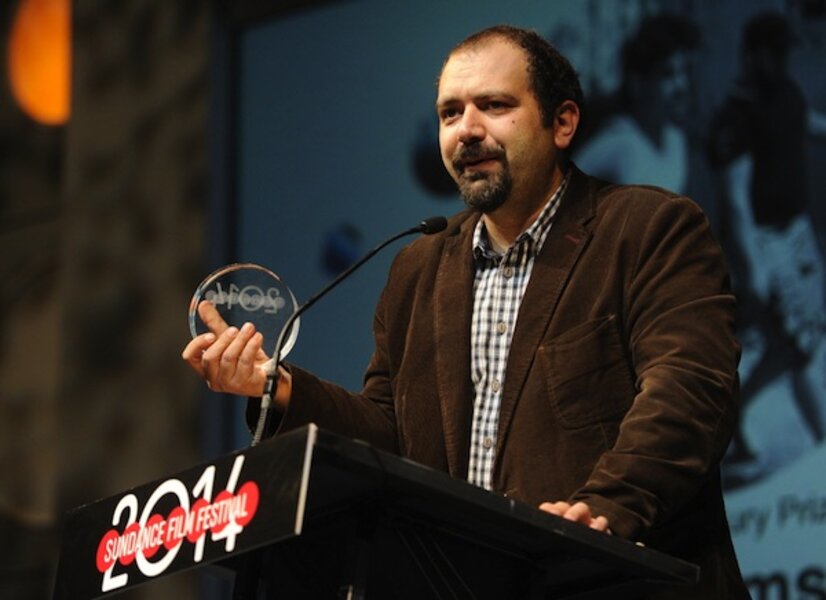'Return to Homs' embeds viewer in an embattled Syrian city
Loading...
| Istanbul
When Talal Derki began filming “Return to Homs,” he imagined a happy ending: a victorious popular uprising against Syria's regime. But, mirroring events on the ground, the documentary inevitably took a dark turn.
“We believed in the beginning if we showed what is happening, something will change. But there is no need to tell the world what is happening in Syria. They know. So we decided to make this video like a personal album,” the Syrian director told an audience at the 33rd Istanbul Film Festival this week.
Filmed between August 2011 and May 2013, the documentary takes place in Syria's third largest city, Homs. It kicks off with two young characters: media activist Osama al-Homsi and Abdel Basset Sarut, a football goalkeeper who wins the hearts of protesters with his witty anti-regime songs.
The two friends find common cause in their determination to expose and topple the Bashar al-Assad regime. Mr. Homsi begins filming the largely peaceful protests that put Homs on the map as the “capital of the revolution.” The Syrian Army rolls in with tanks and demolish homes in two flashpoint neighborhoods, including those of the main characters.
As the uprising develops, their paths diverge. In the face of violent massacres, Homsi holds onto his camera while Mr. Sarut despairs and turns to violence.
Homsi keeps shooting in the “optimistic” belief, the director says, that his images of massacred children and bombings would spur the world to action. He is later critically wounded and then detained on the Syrian-Lebanese border, and his fate is unknown.
“The hardest thing is the people we lost while filming them,” Derki told The Christian Science Monitor. Backup characters and cameramen had to be lined up in case more crew members were lost during the shoot.
Citizens turned revolutionaries
Against impossible odds, Sarut survives. He forms a brigade with his friends to protect families trapped in besieged areas of Homs. Cameraman Qahtan Hassoun – whose trip to Istanbul for the festival was his first outside Syria – shadows the two citizens turned revolutionaries.
What sets Sarut apart is his gift of song, impossible charisma, and suicidal sense of courage. The same defiant tunes he sang during protests weave together later scenes of destruction and harrowing loss.
“I am tired, man,” he confesses to the camera, sitting between two thin walls as artillery shells rain down.
“We were there heart to heart as the army pounded all around us,” recalls cameraman Hassoun, who calls Sarut "a symbol of the revolution, a symbol of Syria. No one recognized them. No one sent them help."
Protecting neighborhoods
In two years, Sarut buries his closest friends and four brothers. Delirious after his tendons are blown apart in a failed mission to break the siege, he sobs: “For God's sake, do not let the martyr's blood go in vain. Kill me, but just open a way (for the families trapped in Homs.)”
Out of 75 of Sarut's followers, only 10 survived, Hassoun says.
“It is not an earthquake. It is not a natural disaster. People should know there are heroes,” Derki says. “There are still Syrians protecting their neighborhoods and their friends. They won't give up.”
The film – shot by Derki, Homsi, Hassoun, and Orwa Nyrabia – won the World Cinema Grand Jury Prize for Documentary at the Sundance Film Festival.







